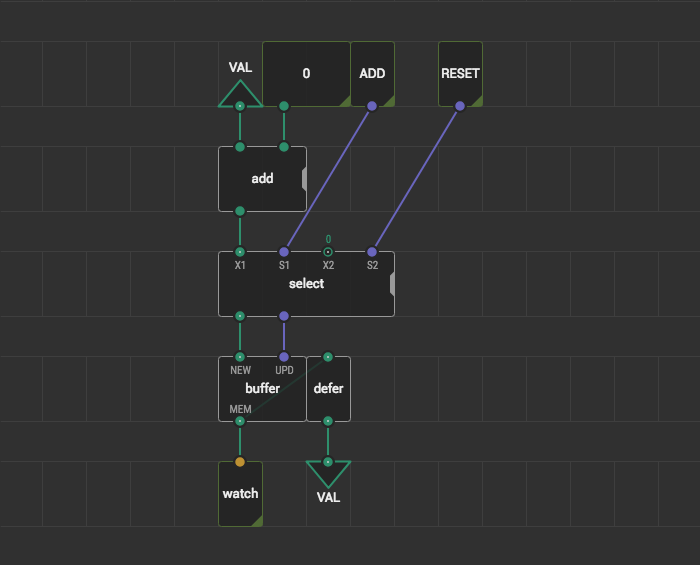Accumulator

Let’s make a device which helps us in adding numbers. We will learn how to memorize values and update them.
The XOD standard library contains a buffer node which memorizes the input value when it receives a pulse.
To make some calculations and apply them to a stored value we should make a loop from the buffer output to the calculations and back to the buffer input.
To avoid limitless calculations and make it possible to reset the buffer we need a select node. It feeds the calculation result to the buffer node on a pulse.
In this example we’re using the add node, but the calculation may be arbitrary complex.
Exercise #
Examine how the input value and pulses affect the stored result.
- Upload the program.
- Change the
tweak-numbervalue. - Send pulse from the “ADD” node.
- Repeat the second and third steps a few times.
- Send pulse from “RESET”.
Replace tweak nodes with a coin acceptor and button to make a ticket system or photo booth.